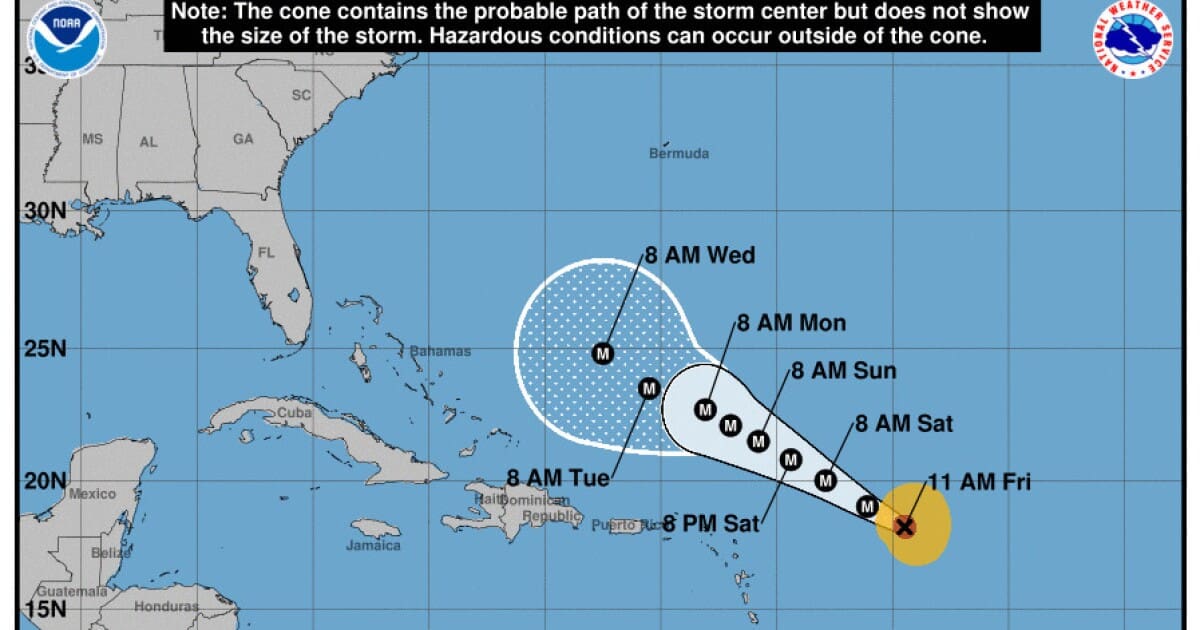Forecasters predict that Hurricane Lee, an incredibly powerful storm, will gradually weaken as it moves across the ocean.

Title: Hurricane Lee Intensifies to Category 4, Threatens Dangerous Beach Conditions
Introduction:
As of September 8, 2023, Hurricane Lee has rapidly intensified into a powerful Category 4 storm, with sustained winds reaching 155 mph. While initial forecasts predicted even stronger winds, the National Hurricane Center (NHC) assures that the hurricane will remain extremely strong. Fortunately, Lee is not currently posing a threat to the United States or the Caribbean in terms of landfall. However, the hurricane’s sheer power will bring dangerous beach conditions to Puerto Rico and other islands. Additionally, rip currents are expected to impact most of the U.S. East Coast by Sunday.
Lee’s Path and Intensity:
According to the latest forecast, the heart of Hurricane Lee is expected to remain well north of the Leeward Islands, the Virgin Islands, and Puerto Rico as it moves west-northwest across open water over the weekend and early next week. Hurricane Hunter aircraft have been deployed to monitor the storm’s intensification. Lee’s maximum sustained winds increased from 80 mph to 160 mph in just 24 hours, making it an unusually fast-growing hurricane. Waves near the storm’s center are peaking between 45 and 55 feet, adding to its destructive potential.
Potential Impact and Uncertainty:
Despite its distance from land, Lee’s intensity is expected to fluctuate due to internal dynamics such as eye wall replacement. While the most extreme wind predictions have been revised, the storm is still projected to remain a formidable force over the next five days. Additionally, Lee is anticipated to grow larger, extending the threat of dangerous ocean swells. The hurricane’s forward speed is predicted to significantly decrease, potentially impacting the Bahamas, the East Coast, and Atlantic Canada. The NHC’s five-day forecast cone currently shows a slight nudge to the north on Wednesday.
Monitoring Lee’s Path:
Although Hurricane Lee does not pose an immediate threat to any land areas, experts advise closely monitoring its path. There is a chance that Lee may curve north, missing the Caribbean islands and the U.S. mainland. However, long-range models are not infallible, as demonstrated by Hurricane Irma in 2017, which deviated from its projected path and struck Florida’s Gulf coast. Therefore, caution is warranted.
Climate Change and Hurricane Intensity:
The intensification of Hurricane Lee has been attributed to warm waters, with temperatures near 86 degrees Fahrenheit east of the Lesser Antilles. Climate change has been linked to the frequency and strength of tropical storms and hurricanes. Rising sea levels and more intense rainfall contribute to the destructive power of these storms. As the world continues to grapple with climate change, understanding and monitoring these natural disasters becomes increasingly important.
Conclusion:
Hurricane Lee’s rapid intensification into a Category 4 storm highlights the power and unpredictability of hurricanes. While the storm is not currently threatening land areas, dangerous beach conditions and rip currents are expected to impact Puerto Rico, the U.S. East Coast, and surrounding regions. As the hurricane progresses, its intensity and path will be closely monitored to ensure the safety of affected areas. Understanding the connection between climate change and hurricane intensity underscores the urgency of addressing this global issue.
Original Story at www.wyomingpublicmedia.org – 2023-09-08 14:14:00


Comments are closed.